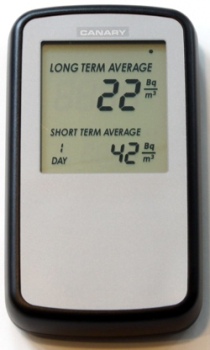A new measuring device developed by Corentium , a Norwegian company enables easier checking of radon concentration within buildings.
 The radon measuring device is designed for normal private dwellings, office buildings and institutions
The radon measuring device is designed for normal private dwellings, office buildings and institutions
After smoking, indoor radon is considered to be the next leading cause of lung cancer. In the U.S. around 20,000 people die due to radon-related lung cancer every year, while in Norway the figure is around 300. Radon is a colorless, odorless, hazardous, natural, radioactive gas that exists below the ground. It has the ability to seep up through building foundations into the rooms.
Researchers at Corentium have developed a simple device that can be easily used for measuring radon concentration in office buildings, institutions and private dwellings. Currently, alpha track detectors are used for gauging the radon concentration. The device comprises a film within a plastic container, which must be kept in the suspected room for a period of two months. The gas detector must then be sent for analysis.
The new Corentium-developed measuring instrument is a wireless device that is similar to a thermometer. It has to be kept in the room where the measurement has to be taken and for a couple of days and it will provide a reading of the amount of radon gas in the room.
The Nordic countries are adopting a legislation regarding radon measurement. Some countries have already passed legislation. Norway has laid out rules regarding radiation protection and has mandated that all leased dwellings, schools and child-care facilities should undergo radon concentration measurement by 2014 end. In Norway, the threshold value for radon exposure has been brought down to 100 Bq from 200 Bqs.
The University of Oslo, INTEF Building and Infrastructure and Corentium have collaborated on this project. The Research Council of Norway and Innovation Norway have provided funding for the project.